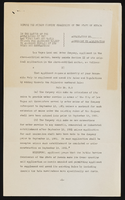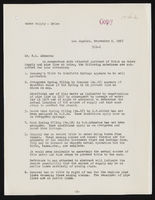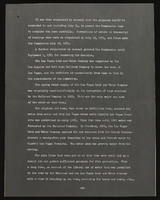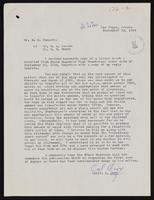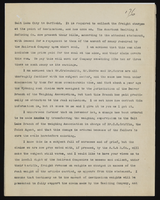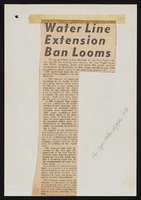Search the Special Collections and Archives Portal
Search Results

Letter from Walter R. Bracken (Las Vegas) to Mr. Will Wittwer (Las Vegas Ranch), May 5, 1938
Date
1938-05-05
Archival Collection
Description
Responding to complaints that water from a spring located on the Las Vegas ranch property had been contaminated, directions were given to repair and protect the spring.
Text
Pagination
Refine my results
Content Type
Creator or Contributor
Subject
Archival Collection
Digital Project
Resource Type
Year
Material Type
Place
Language
Records Classification



